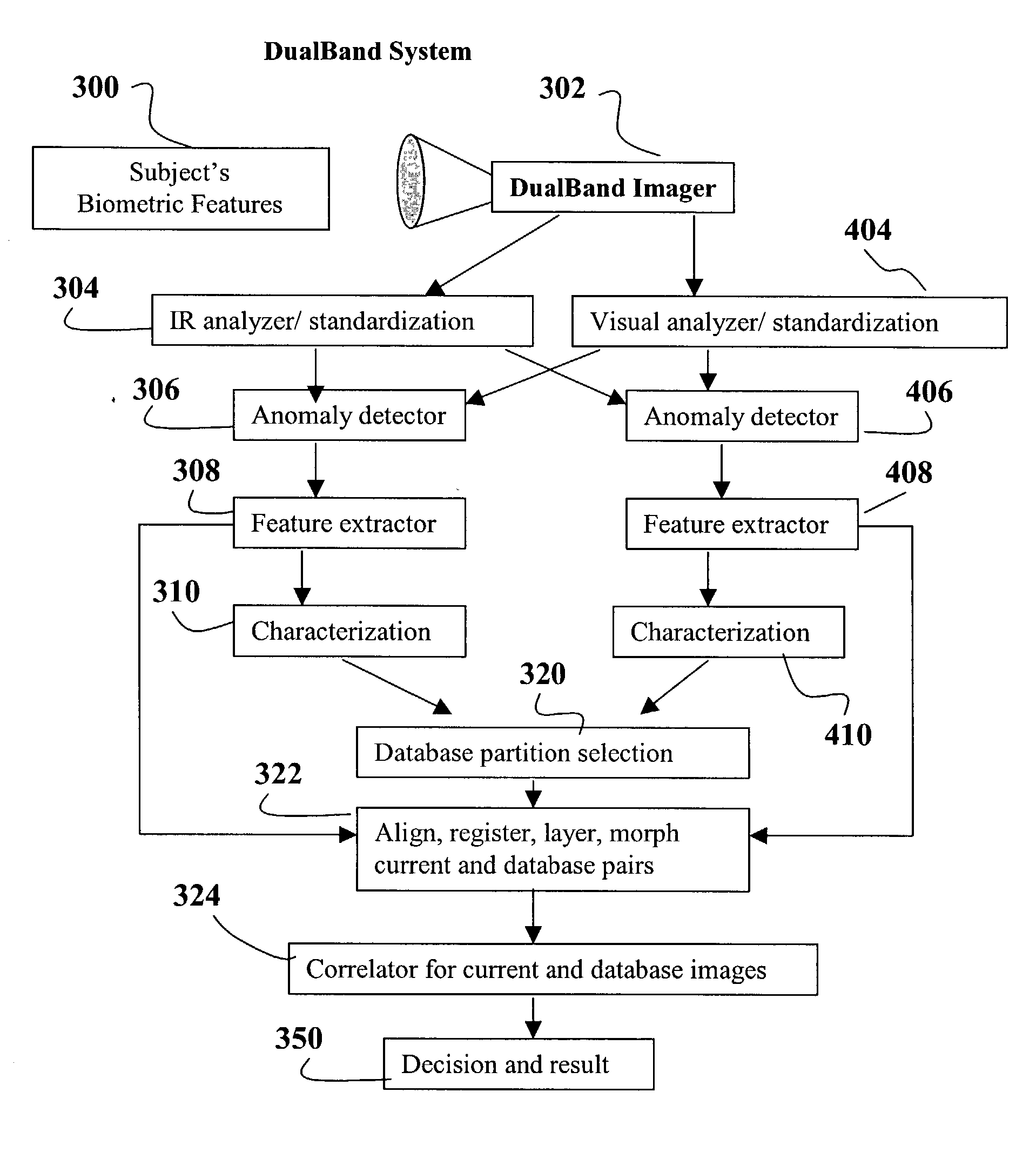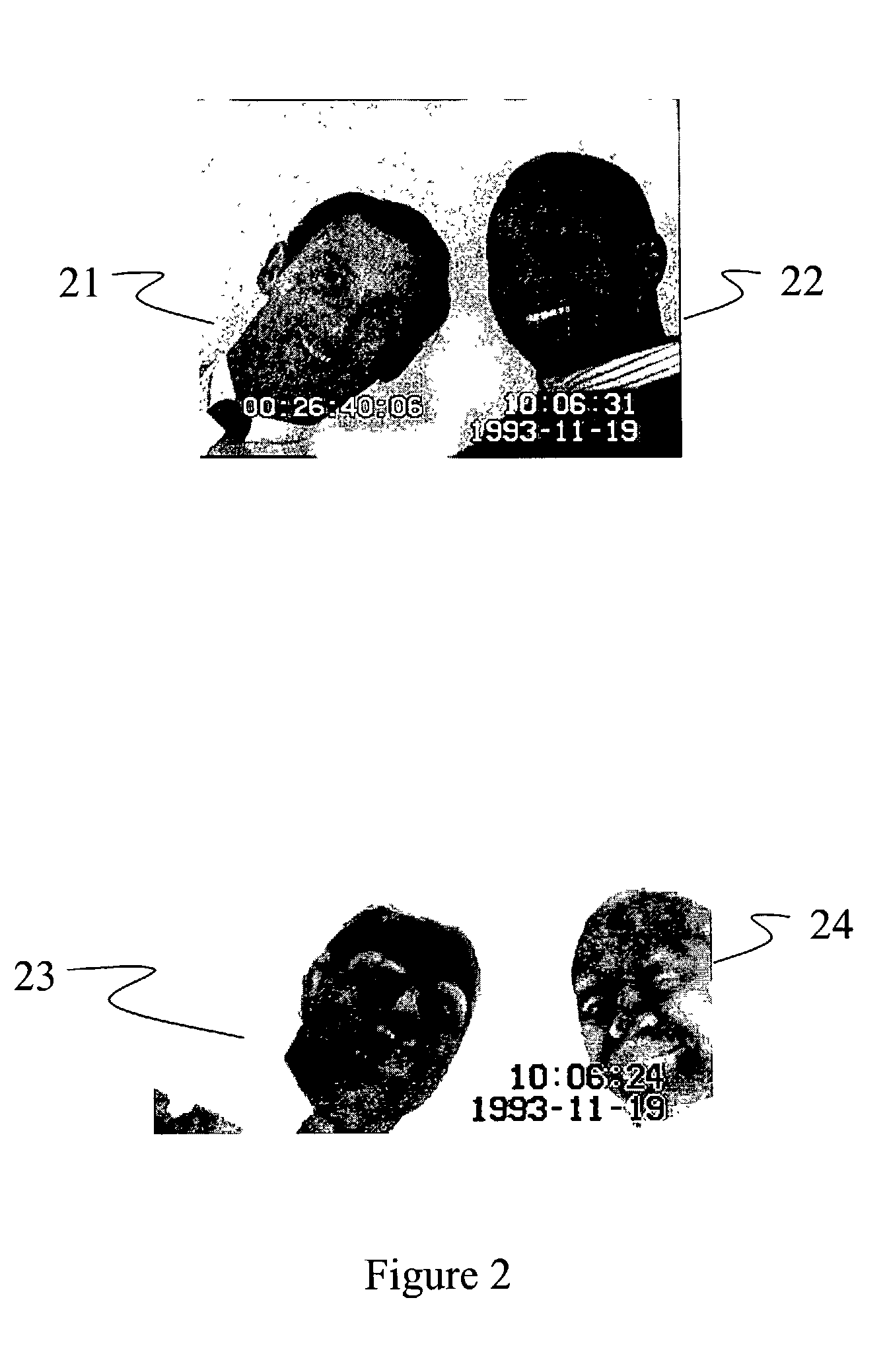Dual band biometric identification system
- Summary
- Abstract
- Description
- Claims
- Application Information
AI Technical Summary
Benefits of technology
Problems solved by technology
Method used
Image
Examples
Embodiment Construction
[0045] The present invention may be described in relation to the following aspects of biometric identification:
[0046] 1. Biometric systems which utilize face, fingerprint, palm, wrist, or other images are generally prone to unacceptably high false negative rates when the decision threshold is set for acceptable false positive errors. Imaging artifacts are often responsible for both types of errors. When the imaging is done in the visible spectrum, illumination variations such as dim light, glare, and shadows are a primary problem. When the imaging is done in thermal infrared, image saturation and poor depth of focus are primary problems, along with eyeglasses when faces or eyes are to be located and tracked.
[0047] 2. By reducing the effects of artifacts, a dual-band visual / infrared imaging system offers improvement in accuracy for biometric systems which use anatomical feature location, shape, and interconnections for identification.
[0048] 3. Localized areas of thermal infrared or v...
PUM
 Login to View More
Login to View More Abstract
Description
Claims
Application Information
 Login to View More
Login to View More - R&D
- Intellectual Property
- Life Sciences
- Materials
- Tech Scout
- Unparalleled Data Quality
- Higher Quality Content
- 60% Fewer Hallucinations
Browse by: Latest US Patents, China's latest patents, Technical Efficacy Thesaurus, Application Domain, Technology Topic, Popular Technical Reports.
© 2025 PatSnap. All rights reserved.Legal|Privacy policy|Modern Slavery Act Transparency Statement|Sitemap|About US| Contact US: help@patsnap.com



